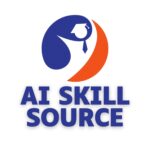
Understanding the Fundamentals of eLearning Analytics
On the planet of eLearning, understanding pupil efficiency is essential. That is the place where eLearning analytics comes into play, serving as the compass that guides improvement professionals and educators in the direction of success by offering them data-driven insights.
So, what precisely are eLearning analytics? They’re the gathering, processing, and evaluation of eLearning information. This information comes from many mediums, comparable to platforms, functions, and studying administration programs (LMS), yielding a trove of knowledge within the type of numerical information, textual content, utilization logs, and more.
Every bit of knowledge gathered gives a novel perspective on learners’ behaviors actions, and efficiency. It identifies which content material is participating learners, tracks their progress, and highlights areas the place they could be struggling. However, past particular person efficiency, eLearning analytics additionally make clear patterns and tendencies throughout programs and cohorts, permitting improved improvement methods on a bigger scale.
At its core, eLearning analytics fall into 4 broad classes: descriptive, diagnostic, predictive, and prescriptive. Descriptive analytics present a summary of previous occasions, such as the variety of clicks, time spent on a web page, or course completion charges. Diagnostic analytics delve deeper, diagnosing the causes behind these occasions. Predictive analytics make use of extra superior methods to anticipate future behaviors based mostly on previous information— like predicting who may fail a course or recommending content material to greatest go well with a learner. Lastly, prescriptive analytics provide options, suggesting actions to enhance the educational setting or course outcomes.
Furthermore, eLearning analytics encapsulate a spread of analytical fashions, from easy statistics to advanced machine studying fashions. Relying on the scope and targets of your analytics, varied strategies could also be employed. At decreased ranges, fundamental metrics like common grades, click-on charges, or completion charges could suffice. Nevertheless, extra complete analytics could warrant superior fashions that think about several variables, analyze the semantic or sentiment of textual information, and even make the most of synthetic intelligence (AI) to create dynamic, adaptive studying paths.
Growing an understanding of eLearning analytics is key for each eLearning improvement skill. It gives a scientific, data-backed system to validate and improve your methods, resulting in improved studying experiences and outcomes. With this basic understanding, we will now transfer on to discover how eLearning analytics play an unprecedented position within the general improvement technique and the way to maximize their potential.
Adopting eLearning analytics will not be merely an alternative; in immediately’s aggressive instructional panorama, it’s a necessity. It supplies actionable insights that enrich the eLearning expertise, driving each learner’s efficiency and organizational development concurrently. As we proceed to the next chapters, we’ll delve extra intensely into this, eluding to the methods to leverage these insights and make your eLearning endeavors profoundly efficient.

The Function of eLearning Analytics in Improvement Technique
eLearning Analytics performs a pivotal position in the improvement and implementation of efficient eLearning methods. It includes gathering, measuring, analyzing, and reporting information about learners and their contexts to know and optimize studying and the environments wherein it happens.
The essential position of eLearning Analytics in improvement techniques might be broadly categorized below in 4 key areas: personalization, enhancement, prediction, and setting benchmarks.
Firstly, one of the vital options of eLearning Analytics is the chance for personalization. eLearning Analytics can present essential insights into each learner’s particular personal progress, preferences, strengths, and weaknesses. This information might be utilized to personalize coaching applications, guaranteeing that every particular person learner receives the proper schooling, tailor-made to their distinctive wants and studying model.
Secondly, eLearning Analytics helps in figuring out the loopholes and areas of enhancement within the eLearning modules. The analytical information generated from the scholars’ progress, course interplay, and completion charges helps in refining the content material and general construction of the eLearning programs. Furthermore, it may additionally throw mild on the general effectiveness of the instructing methods, facilitating their fine-tuning and evolution.
Within the third place comes prediction. Superior analytics can predict potential studying paths and outcomes, permitting proactive measures to assist struggling learners, forestall dropout charges, and enhance learner outcomes. Preemptive interventions triggered by analytical predictions can drastically cut back the chance of learners falling behind or out of the educational journey altogether.
Lastly, setting benchmarks. The efficiency information gathered using eLearning Analytics can facilitate the institution of efficiency benchmarks. These benchmarks make the duty of evaluating a particular person learner or group’s progress simple and clear, creating an optimistic aggressive spirit and bolstering motivation.
Moreover, integrating eLearning Analytics in improvement techniques also can foster higher determination-making. Information-driven selections assist in enhancing the effectiveness of eLearning applications by measuring precise outcomes toward desired outcomes. This continuous suggestions loop aids in setting lifelike, achievable, and significant targets for learners.
Furthermore, eLearning Analytics supplies the proof-of-impact organizations want when assessing the return on funding for online coaching initiatives. It goes a good distance in measuring the effectiveness of the coaching when it comes to how much information the learners have gained, how they’re making use of it, and the way it’s impacting enterprise outcomes.
Nevertheless, the profitable implementation of eLearning Analytics calls for strict attention to information privacy and moral concerns. Entry to the private information of learners requires stringent information safety measures and prudent use of information.
In conclusion, the position of eLearning Analytics in improvement techniques doesn’t simply finish on the manufacturing of information and the era of reviews. It extends to reworking that information into actionable insights, thereby contributing positively to learners’ efficiency and enhancing the general impression of the eLearning methods.

Strategies to Maximize the Potential of eLearning Analytics
To harness the complete potential of eLearning Analytics in a developmental technique framework, varied techniques might be employed. The best way analytics aids within the identification and understanding of person behavior and studying patterns can’t be careworn sufficient. Due to this fact, making the most effective use of those analytics for the event of strategic plans is essential.
Firstly, information assortment ought to be exact. eLearning platforms gather an enormous quantity of information about customers, however the high quality of information usually surpasses the amount. For institutions, the place where the info isn’t significant or related, even terabytes of it will not make a lot of distinction. Prioritize gathering information that contributes to understanding a person’s behavior, how they work together with the programs, their engagement fee, their progress, and areas of the place they wrestle.
Secondly, make use of learner-centric analytics. Give attention to particular person learners, understanding their studying patterns, after which tailoring the instructing strategies accordingly. Take note of the programs they work together most with, how much time they spend on them, and their success charges. Utilizing these information factors, educational design might be improved to supply personalized studying expertise. This strategy not solely boosts engagement charges but additionally enhances the educational outputs.
Subsequently, analytics ought to be predictive. The usage of predictive analytics in eLearning permits professionals to foresee potential issues learners may face and implement options proactively. This might embrace figuring out subjects or modules the place learners are more likely to wrestle or predicting if a selected learner is more likely to drop out based mostly on their interplay with the course.
Thirdly, it’s important to experiment with instructing strategies. Topic the educational modules to A/B testing- totally different variations of the identical module might be made and the variations being hailed greatest by analytics might be adopted. This aids in zeroing in on efficient studying mechanisms and in flip-bettering course designs.
Furthermore, gather suggestions constantly. Learners present invaluable views that may not be mirrored in uncooked information analytics. A mix of quantitative and qualitative types of information gathering gives a complete view of the learners’ expertise.
Lastly, use analytics outcomes to tell and replace your improvement technique frequently. The info gathered supplies real-time efficiency indicators and ought to be used to usually regulate and refine the instructing approaches based mostly on analyzed behavior and suggestions.
Maximizing the potential of eLearning Analytics will not be a one-time motion, however a steady course of. It includes being receptive and adaptable to outcomes. It’s essential for eLearning improvement professionals to undertake a learner-centric and data-driven strategy to strategize educational expertise successfully.

The Utility of eLearning Analytics in Actual-world Situations
eLearning Analytics performs a pivotal position in creating personalized studying environments and personalizing coaching for higher studying outcomes. In this context, it’s helpful to delve into several real-world eventualities in the place where the appliance of eLearning Analytics has proven tangible outcomes.
One frequent utility of eLearning Analytics is within the Larger Training sector. Quite a few universities are making use of information analytics to trace college students’ studying patterns, behaviors, and engagement ranges. For instance, Purdue College’s Course Alerts system makes use of analytics to determine college students liable for underachieving. By monitoring college students’ interactions with studying supplies, discussion board contributions, and grades on assessments, Course Alerts helps college members by offering customized assistance based mostly on a particular person’s wants.
Equally, within the company world, corporations are leveraging eLearning analytics to enhance their worker coaching applications. These analytics present insights into staff coaching progress, evaluation outcomes, and areas of wrestle. As an example, IBM’s studying expertise platform ‘Your Studying’, makes use of predictive algorithms to supply customized studying suggestions. IBM is thereby driving worker engagement, serving expertise improvement, and selling a tradition of steady studying.
Subsequent is the usage of eLearning Analytics in instructional expertise platforms like Huge Open Online Programs (MOOCs). By analyzing learner behaviors these platforms present customized suggestions to learners, aiding them in mastering their areas of curiosity or needful topics. Moreover, course creators use insightful information to repeatedly replace and enhance their course content material.
One other nice instance of eLearning analytics utility is in adaptive studying programs. These programs harness information from learners’ interactions and adapt the content material to go well with their studying tempo, difficulties, and elegance. McGraw Hill’s ALEKS (Evaluation and Studying in Information Areas) system is a traditional instance of this. Primarily based on the learner’s information and expertise, ALEKS supplies personalized directions and assessments, resulting in improved studying outcomes.
Finally but not least, eLearning analytics is revolutionizing particular schooling. As an example, Houghton Mifflin Harcourt’s Waggle platform makes use of real-time information to gauge college students’ proficiency ranges and engagement. It adapts educational content material and gives customized suggestions, bringing a few vital impressions on college students with particular wants.
Coming to the crux, the appliance of eLearning Analytics in real-world eventualities is multifaceted and extremely impactful. It bears the potential to streamline studying experiences, enhance content material relatability, and make pedagogy extra outcome-oriented. By personalizing the educational interfaces and content material, eLearning Analytics is unequivocally selling larger learner engagement and achievement.

Future Prospects of eLearning Analytics in Improvement Technique
eLearning analytics refers back to the assortment of information from eLearning programs to enhance the effectiveness of a company’s studying and improvement applications. As we push additional into the digital age, the potential effect of this observation continues to develop. The longer term is about for eLearning analytics to turn out to be an integral part of eLearning improvement methods.
As information evaluation applied sciences mature, we’re more likely to see much more refined use of eLearning analytics. This might embrace predictive modeling, permitting organizations to anticipate learner conduct and tendencies and tailor their course content material accordingly. Machine studying algorithms additionally maintain nice potential as they may adapt the educational supplies in real-time based mostly on a person’s conduct, information, and expertise.
Sooner or later, we may see the combination of eLearning analytics with different information sources together with HR programs, social media information, and even wearable expertise. By combining analytics information from totally different sources, an extra detailed, rounded image of a learner’s progress might be constructed. This complete perspective can assist to find out not solely the effectiveness of the educational technique but additionally its impression on general job efficiency and productiveness.
Biometric suggestions are one other thrilling prospect. It’s anticipated that extra eLearning platforms can be enabled to gather and analyze biometric information from learners when they’re interacting with eLearning materials, together with coronary heart fee, physique temperature, and eye-tracking. This might present one other layer of information about learners’ engagement and stress ranges throughout the means of studying, enabling organizations to constantly refine and optimize their eLearning programs.
Potential cross-sectional collaborations between instructional technologists, psychologists, information scientists, and different concerned fields may result in extra dependable statistical fashions, thus bettering the accuracy and usefulness of eLearning analytics. This teamwork may simplify the info reporting and visualization course to make insights extra accessible for stakeholders.
Moreover, massive information options in cloud computing are anticipated to affect eLearning analytics. Cloud-based analytic instruments make it possible for eLearning professionals to handle and analyze huge volumes of information extra effectively. In consequence, the burden on native storage assets can be considerably lowered.
Lastly, it’s not solely the gathering of studying analytics that holds promising potential for future studying improvement methods, but additionally the moral utilization of those insights. As we glance in the direction of the way forward for eLearning analytics, consideration should even be paid to privacy issues and moral information utilization. A steadiness ought to be maintained between personalization and privateness to make sure information is used responsibly to reinforce studying outcomes.
In conclusion, eLearning analytics holds immense potential for future studying and improvement methods. Nevertheless, maximizing this potential requires progressive applied sciences, cross-collaboration, and an eager eye on moral concerns. With knowledgeable, strategic planning and considerate execution, eLearning professionals can leverage the ability of analytics to propel the success of their programs and learners alike.
……………….
BSB UNIVERSITY LEARN AND EARN AISKILLSOURCE.COM










